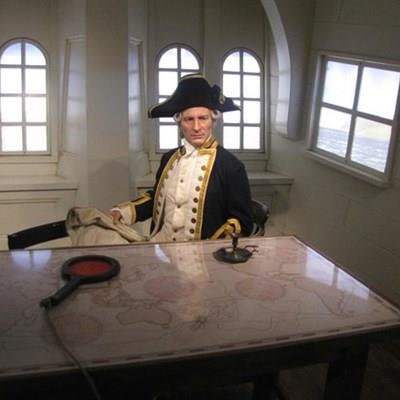
NavList:
A Community Devoted to the Preservation and Practice of Celestial Navigation and Other Methods of Traditional Wayfinding
From: Jim Wyse
Date: 2022 Mar 2, 07:47 -0800
Frank,
This is clever indeed! I had to think hard about why it works. Perhaps it’s because the Sun and the tip of one’s shadow are antipodes on the celestial horizon of a highly localized celestial sphere centered on the top of one’s head. No ‘height-of eye’ correction is needed; but, perhaps, a ‘depth-of-eye’ correction might be required by the observer’s eye placement ‘half-a-head’ below the plane of the celestial horizon. Thought I might rig an ‘over-the-head’ device with eye-level, left and right horizontal protrusions and thus provide shadow points for which neither ‘height-of-eye’ nor ‘depth-of-eye’ corrections would be needed.
It occurs to me this might account for a rather odd bit of British naval attire: the ‘thwart-ships’ style hat. It never seemed (to me) to be very practical: it catches the wind and leaves its wearer facially exposed to sun, salt spray, heavy rain, and driving snow. However, it would seem to be particularly well suited to shooting anti-lunars. It doesn’t need to be reversed when taking a sight and its eye-level ‘wings’ result in convenient antipodal shadows.
Captain James Cook (shown in the attached Madame Tussaud’s depiction) seemed particularly fond of lunars as well as thwart-ship style headwear. Ok, I don’t want to take all this too far since there’s much about which I need to be corrected; however, I now have much greater respect for the navigational applicability of broomsticks and I will never, ever look at my shadow in quite the same way again.
Many thanks, Frank. Cheers to all.
Jim Wyse







